It began with a poem.
“I saw the best minds of my generation destroyed by madness, starving hysterical naked …”
When Allen Ginsberg read his poem “Howl” at the now-closed Six Gallery in San Francisco on October 7, 1955, he was rising up against the Cold War, the wars in Asia and what President Dwight Eisenhower had dubbed the “military industrial complex.”
San Francisco poet Lawrence Ferlinghetti, co-founder of City Lights Booksellers & Publishers, was in the audience and sent Ginsberg a telegram afterward offering to publish it.
From suits to poets
“The Beat poets began the counterculture movement in the arts that is the reason all the artists I know are still here in San Francisco,” said Andrew Sean Greer, a San Francisco-based novelist who won the 2018 Pulitzer Prize for “Less.”
“Ferlinghetti and his friends changed the city from men in gray flannel suits to poets in leaky basements, black and female and queer poets even then,” Greer tells CNN Travel. “We’re a continuation of that hope and rage and art. I still go to Caffe Trieste with a friend to write and Vesuvio to drink and City Lights for poetry.”
As he turned 100 on March 24, both Ferlinghetti, City Lights – which remains a beacon of poetry and progressive thought in San Francisco’s North Beach neighborhood – and the city all celebrated.
City Lights hosted an open house, galleries featured his photographs and paintings and San Francisco Mayor London Breed declared March 24 Lawrence Ferlinghetti Day. There were also events in New York City for the Bronxville native, who moved to San Francisco after attending University of North Carolina at Chapel Hill, serving in the US Navy during World War II and graduate school at Columbia University in New York and the Sorbonne in Paris.
“He is so very beloved by his friends and neighbors in North Beach and people all round the world,” said punk art surrealist Winston Smith, who designed the controversial Dead Kennedys’ album cover, “In God We Trust, Inc.” in 1981.
“Putting up with the human race for a full century deserves a reward.”
Still writing works that matter
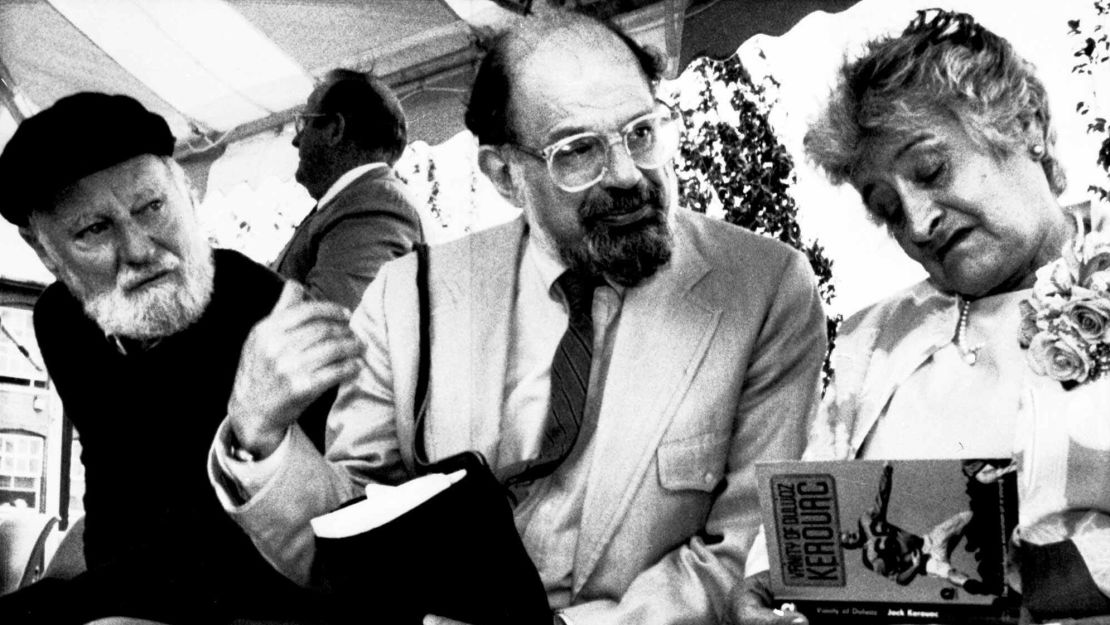
His friends and fans didn’t just celebrate his rich history, including his stand for free speech during the obscenity trial that followed the publication of “Howl and Other Poems.” The trial thrust the Beat Generation writers – which included Ginsberg, Jack Kerouac, William S. Burroughs, Neal Cassady and Ferlinghetti – on the national stage.
Nor did they simply honor Ferlinghetti’s mark in the world of poetry, notably his 1958 book of poems, “A Coney Island of the Mind.”
In this best-seller, he warned of “freeways fifty lanes wide, on a concrete continent, spaced with bland billboards, illustrating imbecile illusions of happiness.”
They celebrated a poet and activist who is still producing works of note. Publishers Weekly called his latest novel, “Little Boy,” released on March 19, “stunningly evocative” and “a Proustian celebration of both memory and moments that will delight readers.”
Many headed to North Beach to celebrate the past and present of the poet, the bookstore and the publishing company this weekend.
If you couldn’t join the celebration, here are some other ways explore the Beat generation, San Francisco’s remarkable literary scene and the Beat Generation’s influence on the world.
City Lights Booksellers & Publishers
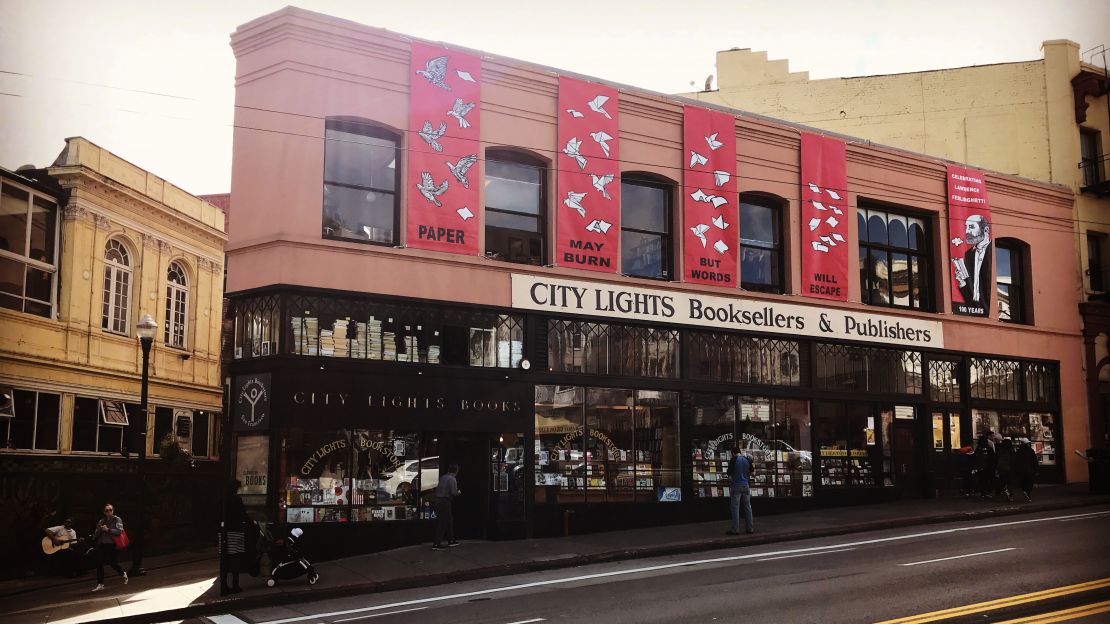
Poetry lovers still gather to hear the spoken word at City Lights.
The bookstore has not simply remained a repository of counterculture writing from the 1950s and 1960s. It continues to evolve as a meeting place for poets, writers and literary events and as a place for progressive books and ideas to develop.
The bookstore’s latest section, Pedagogies of Resistance, was created in the wake of the 2018 US presidential election.
To get an introduction to City Lights publishing, try the 60th anniversary edition of the “City Lights Pocket Poets Anthology,” which was edited by Ferlinghetti himself.
City Lights, 261 Columbus Avenue at Broadway, San Francisco, CA 94133
Punk art and other worms

As City Lights and the artists who celebrate it continue to evolve and expand their expression beyond the Beat culture, they are paying heed to other artistic formats.
That’s why City Lights employees recommend the rare but worthy openings and happenings at Winston Smith’s North Beach space, the Collage Museum of San Francisco, which he also calls Grant’s Tomb Gallery. In addition to his art for the Dead Kennedys, Smith has illustrated dozens of other album covers and is working on a project for Punk Rock Bowling. (Check his website to see his sporadic show schedule or contact him for an appointment.)
City Lights veterans also recommend Live Worms Gallery, where the Beat Museum first opened a temporary location and where an all-female artist lineup took over the space on the International Day of the Woman earlier this year.
Live Worms Gallery, 1345 Grant Ave, San Francisco, CA 94133
The Beat Museum
Home to an extensive collection of Beat memorabilia, this independently owned (and somewhat tattered) museum is worth a visit to see the physical trappings of these artists, writers, poets and raconteurs. The museum will eventually be shuttered for six months while its building undergoes a city-required seismic retrofit and the owners are fundraising to raise money to reopen after the work is done.
Photographer and videographer Christopher Felver, who has documented Ferlinghetti’s life on film and in photographs, has a show of his photos at the museum through June 30.
The Beat Museum, 540 Broadway (at Columbus Avenue), San Francisco, CA 94133
Caffe Trieste
The folks at City Lights still like to visit nearby Caffe Trieste, named for the Italian hometown of founder Giovanni Giotta. where Greer also sometimes writes. The Giotta family claims that the café, which they opened in 1956, was the first espresso coffee house established on the West Coast. Francis Ford Coppola wrote much of the “The Godfather” screenplay at the cafe.
Caffe Trieste, 601 Vallejo Street, San Francisco, CA 94133
Vesuvio Café
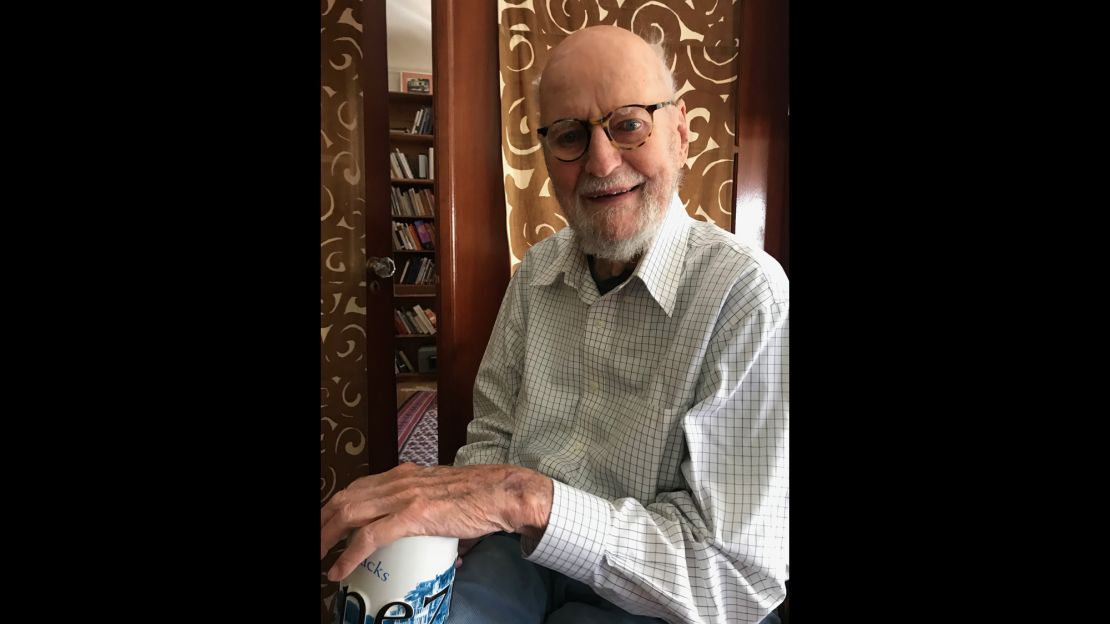
This is really a saloon of the Beat Generation, whose opening predates neighbor City Lights by five years. The perfect location for folks to drink, listen to jazz and read poetry, Vesuvio may be most famous for keeping Jack Kerouac from meeting Henry Miller one night in 1960.
Miller liked Keroauc’s “The Dharma Bums” and wrote him that he wanted to meet him. Instead of driving to Big Sur for their meeting, Kerouac kept calling Miller to say he’d be delayed and kept drinking.
Stop by Jack Kerouac Alley after having a drink at the bar.
Vesuvio, 255 Columbus Avenue, San Francisco, CA 94133
Moe’s Books
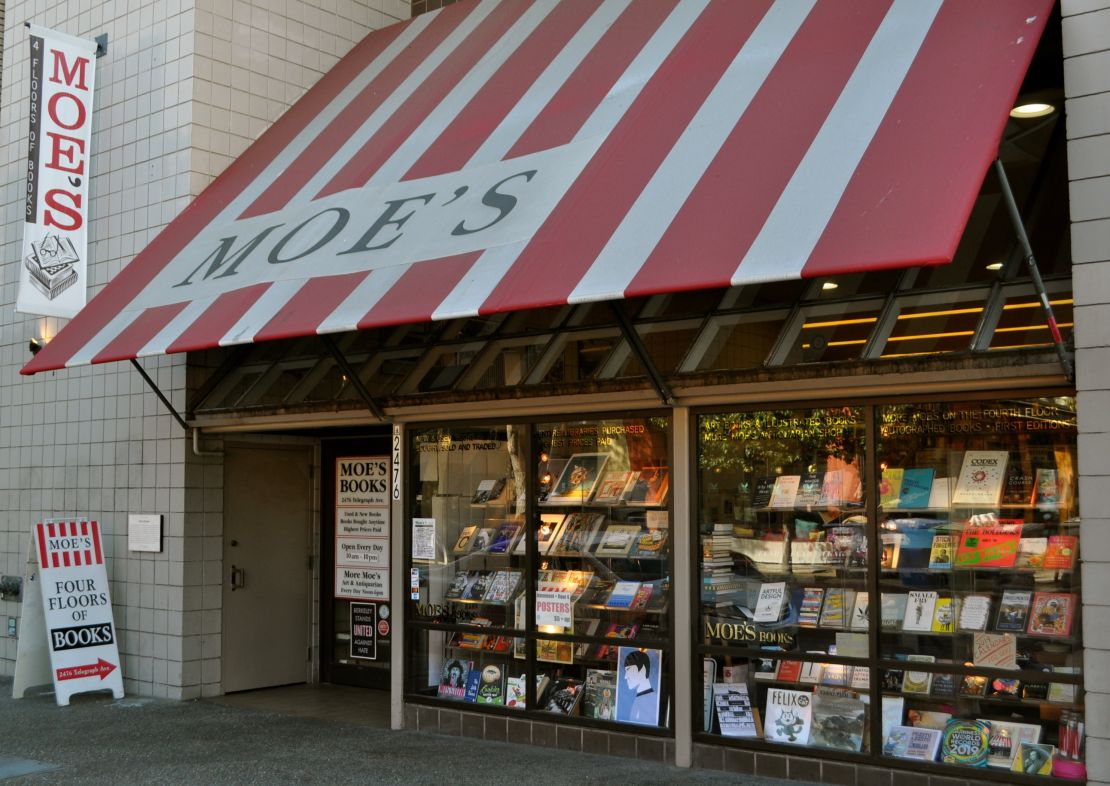
Cross San Francisco Bay to visit Moe’s Books in Berkeley. Founded in 1959 by Moe and Barbara Moskowitz, it sells new books and buys and sells used books.
Moe’s, which moved into the middle of Berkeley’s free speech movement on Telegraph Avenue in the 1960s, has hosted Ferlinghetti, among others. And its April schedule is packed with poetry readings, including appearances by Sally Ashton, Arlene Biala, Alli Warren and Alan Bernheimer.
It’s now owned by Doris Moskowitz, the daughter of the founders.
Moe’s Books, 2476 Telegraph Ave, Berkeley, CA 94704
Where to stay
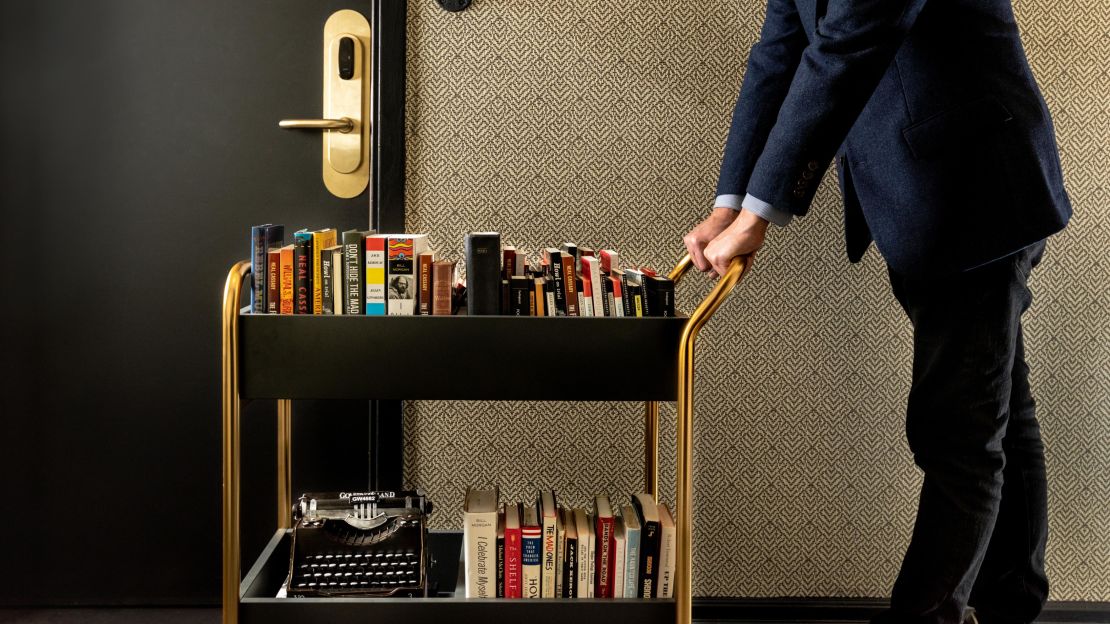
We admit this new hotel charges room rates that would make any devotee of the Beats freak out, and it’s more than clean – which also might be odd to the folks San Francisco columnist Herb Caen sneeringly called “beatniks.” (He coined it shortly after the launch of the Russian “Sputnik” satellite in 1958.)
Hotel Emblem guests can enjoy poetry slams at the hotel’s Obscenity Bar & Lounge, Saturday meditation classes and books through the Book Butler program, featuring a cart of Beat Generation literature curated by City Lights, and in-room libraries.
Staying someplace else? You can still enjoy poetry slams at the Obscenity and the hotel’s excellent guide to exploring the Beat Generation, with a free funky map for a self-guided tour.
Hotel Emblem San Francisco, 562 Sutter Street, San Francisco, CA 94102














